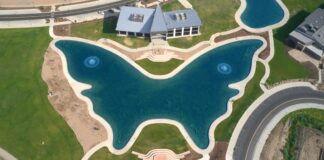BF: Which U.S. areas would you identify as “LEED”ers in sustainable building?
RF: Each region is different and has its own unique environmental priorities and needs. I’ve been excited to see the work being done in the American Southwest recently, which is a region with an obvious and pressing priority: water conservation. We’re hosting our annual Greenbuild International Conference & Expo in Phoenix this November, and Greenbuild is always a great opportunity for me to see the creative and regionally appropriate ways cities have been able to make green building part of their local culture.
BF: Describe the correlation between a strong economy and a healthy environment.
RF: There is more than a correlation between a strong economy and a healthy environment: It’s a direct and complementary connection. In today’s world, companies, organizations and governments that use only a short-term economic metric to measure success, do so at their peril. Real success comes when the triple bottom line is realized: economic prosperity, environmental sustainability and social equity.
Throughout history there have been strong economies that have been achieved by shortchanging the people and/or the environment. You see it when citizens’ health and well-being are negatively impacted by the air they breathe and the water they drink; the result is missed days of work, dollar after dollar spent on healthcare, and a low quality of life.
Conversely, a healthy community environment is a strong indicator of the health of its economy. And in today’s circumstances, the innovation and new jobs that will be the driving force behind healing our environment also will help us heal our national economy.
USGBC’s 10 Ways to Use Recovery Funds
1. Invest in healthy schools and reinvest in our children and their future
2. Build or expand residential energy retrofit programs
3. Make affordable housing more efficient
4. Demonstrate leadership by greening public sector buildings
5. Maximize efficiency in the business community 6
6 . Build capacity through education and training
7. Leverage and extend recovery dollars with a revolving loan fund
8. Get buildings on the right track through retro-commissioning
9. Make informed energy-resource management decisions
10. Lay the groundwork for future holistic measures
Ten Green Ways
In May, the U.S. Green Building Council released a report recommending 10 ways federal recovery funds can be used for green building.
From investing in green schools and home energy retrofit programs to creating a revolving loan fund, the Top 10 list can be used by governments from small towns to metropolitan cities and counties, as well as state governments, looking to make the best use of federal economic recovery funding. The full document can be downloaded by visiting www.usgbc.org/government and clicking on the Green Economic Recovery Resources Web link.
Buildings in the United States are responsible for 39% of CO2 emissions, 40% of energy consumption, 13% water consumption and 15% of GDP per year, making green building a source of significant economic and environmental opportunity. Greater building efficiency can meet 85% of future U.S. demand for energy, and a national commitment to green building has the potential to generate 2.5 million American jobs.
The American Recovery and Reinvestment Act (ARRA) represents an opportunity for green building. Governments are making huge strides to identify shovel-ready and shovel-worthy projects that will play vital roles in the short-term and long-term strength of the economy.












![[VIDEO] Get More for Your Business in Ardmore. Oklahoma](https://businessfacilities.com/wp-content/uploads/2024/02/maxresdefault-324x160.jpg)
